Engineering > Class Notes > ISYE 6501 WEEK 1 HOMEWORK SOLUTIONS (All)
ISYE 6501 WEEK 1 HOMEWORK SOLUTIONS
Document Content and Description Below
ISYE 6501 WEEK 1 HW SOLUTIONS WEEK 1 HOMEWORK – SAMPLE SOLUTIONS IMPORTANT NOTE These homework solutions show multiple approaches and some optional extensions for most of t... he questions in the assignment. You don’t need to submit all this in your assignments; they’re included here just to help you learn more – because remember, the main goal of the homework assignments, and of the entire course, is to help you learn as much as you can, and develop your analytics skills as much as possible! Question 1 Describe a situation or problem from your job, everyday life, current events, etc., for which a classification model would be appropriate. List some (up to 5) predictors that you might use. One possible answer: Being students at Georgia Tech, the Teaching Assistants for the course suggested the following example. A college admissions officer has a large pool of applicants must decide who will make up the next incoming class. The applicants must be put into different categories – admit, waitlist, and deny – so a classification model is appropriate. Some common factors used in college admissions classification are high school GPA, rank in high school class, SAT and/or ACT score, number of advanced placement courses taken, quality of written essay(s), quality of letters of recommendation, and quantity and depth of extracurricular activities. If the goal of the model was to automate a process to make decisions that are similar to those made in the past, then previous admit/waitlist/deny decisions could be used as the response. Alternatively, if the goal of the model was to make better admissions decisions, then a different measure could be used as the response – for example, if the goal is to maximize the academic success of students, then each admitted student’s college GPA could be the response; if the goal is to maximize the post-graduation success of admitted students, then some measure of career success could be the response; etc. Question 2 The file credit_card_data.txt contains a dataset with 654 data points, 6 continuous and 4 binary predictor variables. It has anonymized credit card applications with a binary response variable (last column) indicating if the application was positive or negative. The dataset is the “Credit Approval Data Set” from the UCI Machine Learning Repository (https://archive.ics.uci.edu/ml/datasets/Credit+Approval ) without the categorial variables and without data points that have missing values. 1. Using the support vector machine function ksvm contained in the R package kernlab, find a good classifier for this data. Show the equation of your classifier, and how well it classifies the data points in the full data set. (Don’t worry about test/validation data yet; we’ll cover that topic soon.) Notes on ksvm • You can use scaled=TRUE to get ksvm to scale the data as part of calculating a classifier. • The term λ we used in the SVM lesson to trade off the two components of correctness and margin is called C in ksvm. One of the challenges of this homework is to find a value of C that works well; for many values of C, almost all predictions will be “yes” or almost all predictions will be “no”. • ksvm does not directly return the coefficients a0 and a1...am. Instead, you need to do the last step of the calculation yourself. Here’s an example of the steps to take (assuming your data is stored in a matrix called data):1 # call ksvm. Vanilladot is a simple linear kernel. model <- ksvm(as.matrix(data[,1:10]),as.factor(data[,11]),type=”C- svc”,kernel=”vanilladot”,C=100,scaled=TRUE) # calculate a1...am # a <- colSums(data[model@SVindex,1:10] * model@coef[[1]]) # for unscaled data a <- colSums(data[model@xmatrix[[1]]] * model@coef[[1]]) # for scaled data a # calculate a0 a0 <- – model@b a0 # see what the model predicts pred <- predict(model,data[,1:10]) pred # see what fraction of the model’s predictions match the actual classification sum(pred == data[,11]) / nrow(data) SOLUTION: There are multiple possible answers. See file HW1-Q2-1.R for the R code for one answer. Please note that a good solution doesn’t have to try both of the possibilities in the code; they’re both shown to help you learn, but they’re not necessary. One possible linear classifier you can use, for scaled data z, is -0.0010065348z1 - 0.0011729048z2 - 0.0016261967z3 + 0.0030064203z4 + 1.0049405641z5 - 0.0028259432z6 + 0.0002600295z7 - 0.0005349551z8 - 0.0012283758z9 + 0.1063633995z10 + 0.08158492 = 0. It predicts 565 points (about 86.4%) correctly. (Note that this is its performance on the training data; as you saw in Module 3, that’s not a reliable estimate of its true predictive ability.) This quality of linear classifier can be found for a wide range of values of C (from 0.01 to 1000, and beyond). Using unscaled data, it’s a lot harder to find a C that does this well. It’s also possible to find a better nonlinear classifier using a different kernel; kudos to those of you who went even deeper and tried this! 2. Using the k-nearest-neighbors classification function kknn contained in the R kknn package, suggest a good value of k, and show how well it classifies that data points in the full data set. Don’t forget to scale the data (scale=TRUE in kknn). Notes on kknn • You need to be a little careful. If you give it the whole data set to find the closest points to i, it’ll use i itself (which is in the data set) as one of the nearest neighbors. A helpful feature of R is the index –i, which means “all indices except i”. For example, data[-i,] is all the data except th for the ith data point. For our data file where the first 10 columns are predictors and the 11 column is the response, data[-i,11] is the response for all but the ith data point, and data[- i,1:10] are the predictors for all but the ith data point. • kknn will read the responses as continuous, and return the fraction of the k closest responses that are 1 (rather than the most common response, 1 or 0). SOLUTION: Here’s one possible solution. See file HW1-Q2-2.R for code. Please note that a good solution doesn’t have to try all of the possibilities in the code. As detailed in the code, we observe maximum accuracy for k=12 and k=15. (Again, as above, we’re reporting performance on the training data, which is generally not good practice, as you saw in Module 3.) A summary of the number of correct predictions for different values of k is shown below (using scaled data). Value of k (scaled data) Correct predictions Percent correct predictions 1-4 533 81.50% 6 553 84.56% 7,9 554 84.71% 8 555 84.86% 10,19-20 556 85.02% 5,11,13-14,16-18 557 85.17% 12,15 558 85.32% As the table shows, the key (in the training data) is to use k ≥ 5; smaller values of k are significantly inferior. Although k=12 and k=15 look slightly better than the rest, it’s not a statistically significant difference. • Note that if we’re just looking at fraction of correct predictions, it might be easy to get caught up in finding the very highest amount we can find. Don’t lose sight of the fact that these differences might just be 1 data point out of 654 – which is not statistically significant. We could do the same using unscaled data, by changing one word in the R code; replace model=kknn(V11~V1+V2+V3+V4+V5+V6+V7+V8+V9+V10,data[-i,],data[i,],k=X, scale = TRUE) with model=kknn(V11~V1+V2+V3+V4+V5+V6+V7+V8+V9+V10,data[-i,],data[i,],k=X, scale = FALSE) Using unscaled data, the results are significantly worse. Value of k (unscaled data) Correct predictions Percent correct predictions 1-4 434 66.36% 10 443 67.74% 11 445 68.04% 12 447 68.35% 9,13 449 68.65% 14-15 450 68.81% 5,20 452 69.11% 7-8,16-19 453 69.27% 6 455 69.57% Question 3 Using the same data set as Question 2 use the ksvm or kknn function to find a good classifier: (a) using cross-validation for the k-nearest-neighbors model; and (b) splitting the data into training, validation, and test data sets. SOLUTIONS: (a) There are different ways to do this. Three different methods are shown in HW1-Q3-a.R. Just having one method is fine for your homework solutions. All three are shown below, for learning purposes. Another optional component shown below is using cross-validation for ksvm; this too did not need to be included in your solutions. METHOD 1 The simplest approach, using kknn’s built-in cross-validation, is fine as a solution. train.kknn uses leave-one-out cross-validation, which sounds like a different type of cross-validation that I didn’t mention in the videos – but if you watched the videos, you know it implicitly already! For each data point, it fits a model to all the other data points, and uses the remaining data point as a test – in other words, if n is the number of data points, then leave-one-out cross-validation is the same as n-fold cross-validation. Using this approach here are the results (using scaled data): k Correct Percent correct k Correct Percent correct 1,2,3,4 533 81.50% 18 557 85.17% 5 557 85.17% 19-20 556 85.02% 6 553 84.56% 21 555 84.86% 7 554 84.71% 22 554 84.71% 8 555 84.86% 23 552 84.40% 9 554 84.71% 24-25 553 84.56% 10-11 557 85.17% 26 552 84.40% 12 558 85.32% 27 550 84.10% 13-14 557 85.17% 28 548 83.79% 15-17 558 85.32% 29 549 83.94% 30 550 84.10% As before k < 5 is clearly worse than the rest, and value of k between 10 and 18 seem to do best. For unscaled data, the results are significantly worse (not shown here, but generally between 66% and 71%). Note that technically, these runs just let us choose a model from among k=1 through k=30, but because there might be random effects in validation, to find an estimate of the model quality we’d have to run it on some test data that we didn’t use for training/cross-validation. METHOD 2 Some of you used the cv.kknn function in the kknn library. This approach is also shown in HW1- Q3-a.R. [Show More]
Last updated: 1 year ago
Preview 1 out of 9 pages
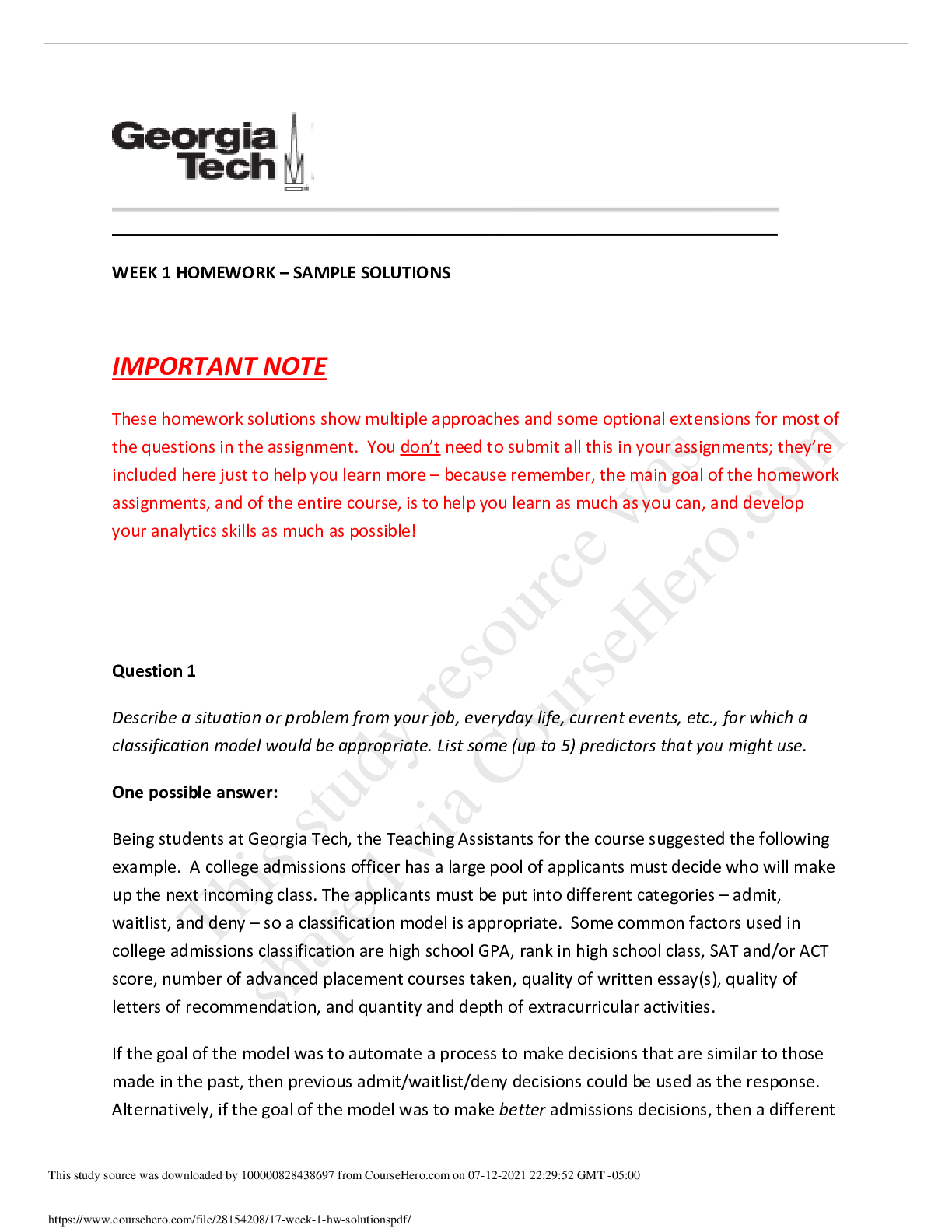
Also available in bundle (1)

Georgia Institute of Technology| ISYE 6501 Introduction to Analytics Comprehensive Bundle For Grade A
Georgia Institute of Technology| ISYE 6501 Introduction to Analytics Comprehensive Bundle For Grade A
By Quiz Merchant 2 years ago
$30
16
Reviews( 0 )
Recommended For You
Business> Class Notes > ISYE 6501 WEEK 1 HW SOLUTIONS WEEK 1 HOMEWORK – SAMPLE SOLUTIONS (All)

ISYE 6501 WEEK 1 HW SOLUTIONS WEEK 1 HOMEWORK – SAMPLE SOLUTIONS
IMPORTANT NOTE These homework solutions show multiple approaches and some optional extensions for most of the questions in the assignment. You don’t need to submit all this in your assignments; the...
By Your A+ Grade , Uploaded: Apr 06, 2021
$5
Finance> Class Notes > FSA Individual Assignment Part 2 & 3- Blackmores (All)

FSA Individual Assignment Part 2 & 3- Blackmores
Executive Summary Blackmores Ltd is an Australian listed (BKL) international supplier of a wide range of vitamins and supplementary dietary products. The company employs over 1000 workers and their...
By Kirsch , Uploaded: Oct 20, 2019
$7
*NURSING> Class Notes > Child Health Nursing. Pediatric ATI Notes (All)
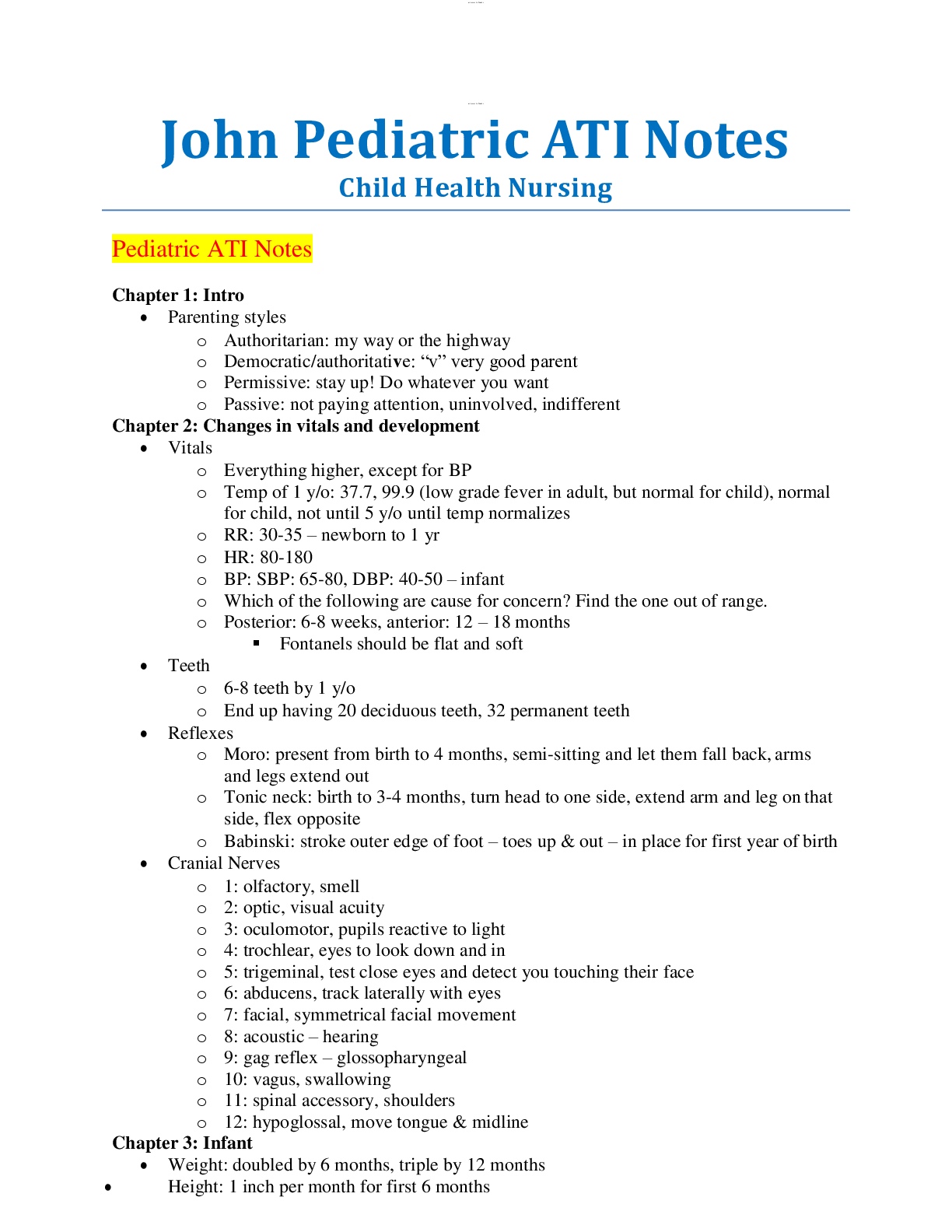
Child Health Nursing. Pediatric ATI Notes
John Pediatric ATI Notes Child Health Nursing Pediatric ATI Notes Chapter 1: Intro • Parenting styles o Authoritarian: my way or the highway o Democratic/authoritative: “v” very good parent...
By SuperSolutions© , Uploaded: Nov 28, 2020
$9.5
*NURSING> Class Notes > NR 566 / NR566 Advanced Pharmacology Care of the Family Week 1 Complete Notes Chapters 21, 33, 41 | Highly Rated | Latest 2020 / 2021 | Chamberlaine College (All)

NR 566 / NR566 Advanced Pharmacology Care of the Family Week 1 Complete Notes Chapters 21, 33, 41 | Highly Rated | Latest 2020 / 2021 | Chamberlaine College
Contains NR 566 / NR566 Advanced Pharmacology Care of the Family Week 1 Complete Notes Chapters 21, 33, 41 | Highly Rated | Latest 2020 / 2021 | Chamberlaine College
By nurse_steph , Uploaded: Dec 27, 2020
$10.5
*NURSING> Class Notes > NR 566 / NR566 Advanced Pharmacology Care of the Family Week 2 Notes Chapters 17, 30, 42, 45 | Highly Rated | Latest 2020 / 2021 | Chamberlain College (All)
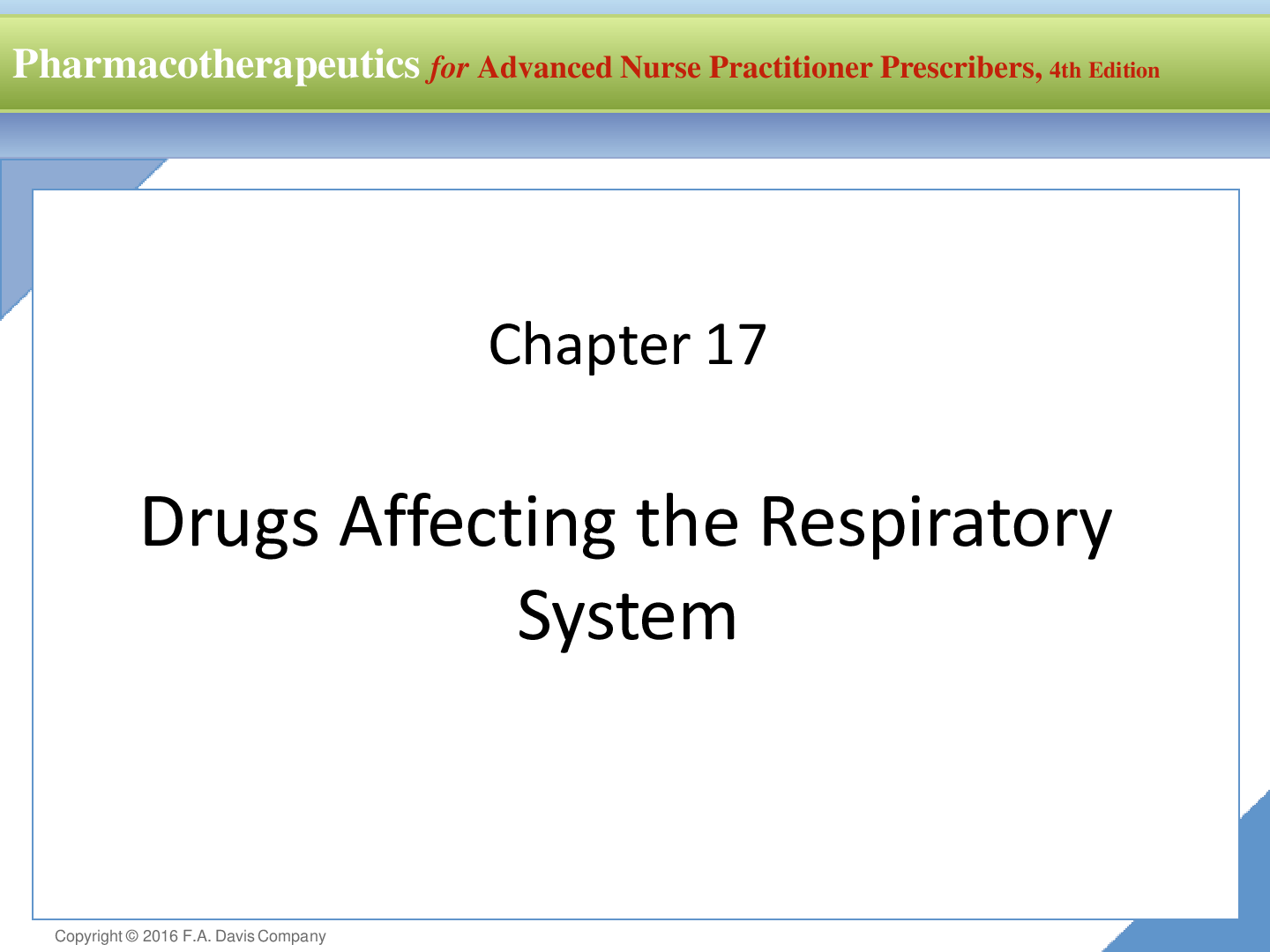
NR 566 / NR566 Advanced Pharmacology Care of the Family Week 2 Notes Chapters 17, 30, 42, 45 | Highly Rated | Latest 2020 / 2021 | Chamberlain College
Conatains NR 566 / NR566 Advanced Pharmacology Care of the Family Week 2 Notes Chapters 17, 30, 42, 45 | Highly Rated | Latest 2020 / 2021 | Chamberlain College
By nurse_steph , Uploaded: Dec 27, 2020
$11
*NURSING> Class Notes > NR 566 / NR566 Advanced Pharmacology Care of the Family Week 4 Complete Notes Chapters 25 | Highly Rated | Latest 2020 / 2021 | Chamberlain College (All)
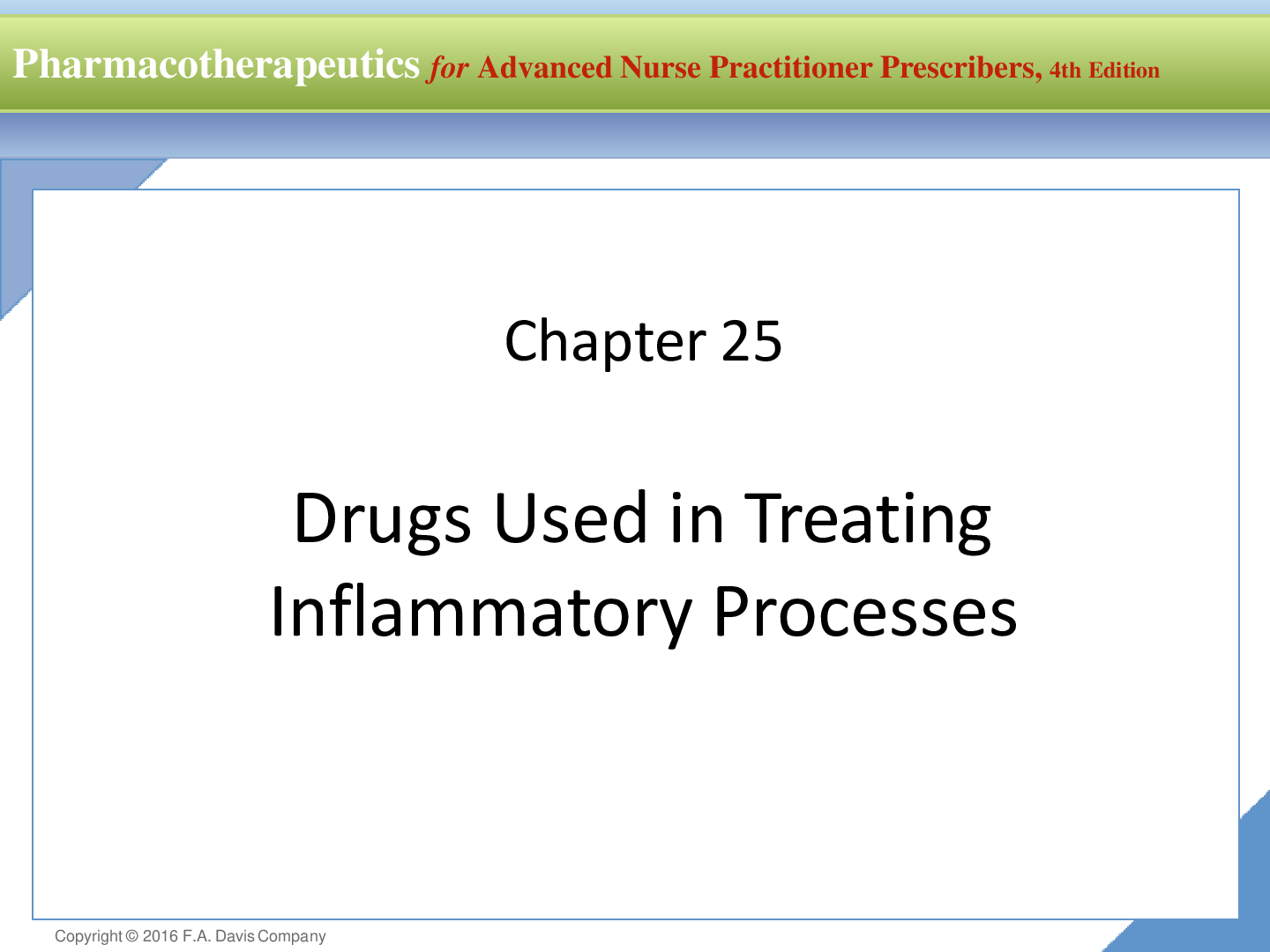
NR 566 / NR566 Advanced Pharmacology Care of the Family Week 4 Complete Notes Chapters 25 | Highly Rated | Latest 2020 / 2021 | Chamberlain College
Contains NR 566 / NR566 Advanced Pharmacology Care of the Family Week 4 Complete Notes Chapters 25 | Highly Rated | Latest 2020 / 2021 | Chamberlain College
By nurse_steph , Uploaded: Dec 27, 2020
$10
*NURSING> Class Notes > NR 566 / NR566 Advanced Pharmacology Care of the Family Week 5 Notes Chapters 18, 27 | Highly Rated | Latest 2020 / 2021 | Chamberlain College (All)
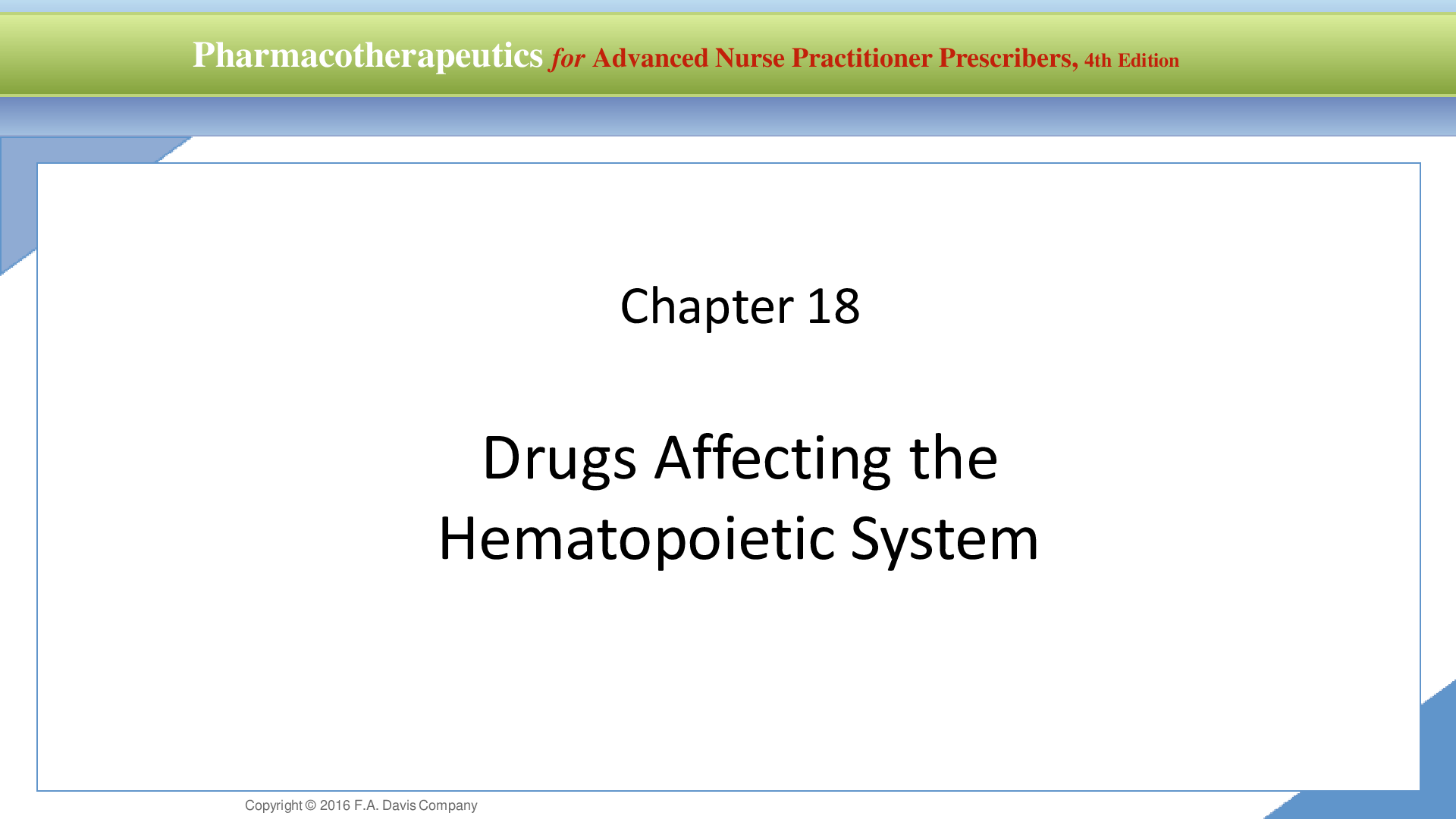
NR 566 / NR566 Advanced Pharmacology Care of the Family Week 5 Notes Chapters 18, 27 | Highly Rated | Latest 2020 / 2021 | Chamberlain College
Contains NR 566 / NR566 Advanced Pharmacology Care of the Family Week 5 Notes Chapters 18, 27 | Highly Rated | Latest 2020 / 2021 | Chamberlain College
By nurse_steph , Uploaded: Dec 27, 2020
$10
*NURSING> Class Notes > NR 566 / NR566 Advanced Pharmacology Care of the Family Weeks 6 Complete Notes Chapters 22, 31, 38, 44 | Highly Rated | Latest 2020 / 2021 | Chamberlain College (All)
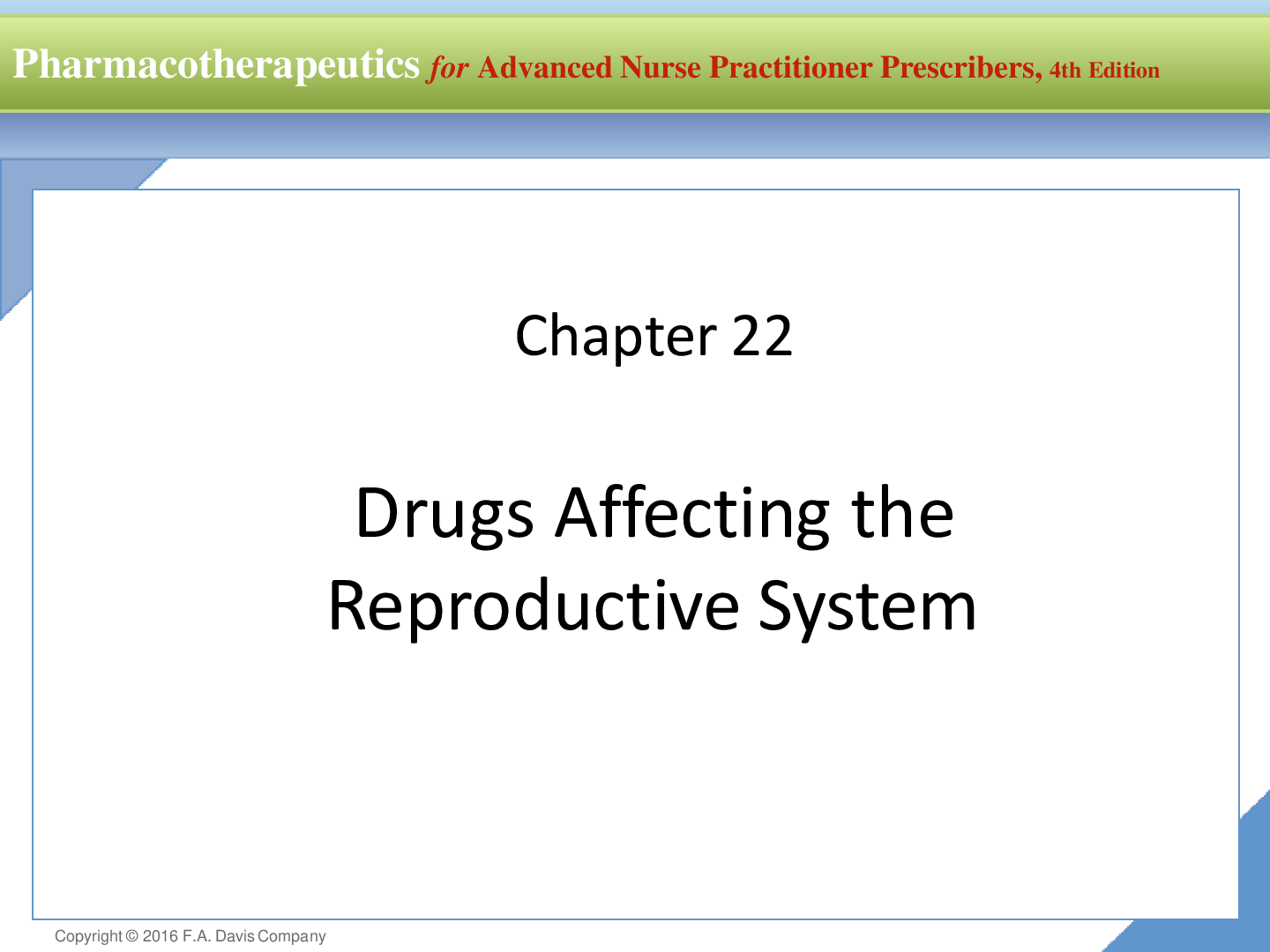
NR 566 / NR566 Advanced Pharmacology Care of the Family Weeks 6 Complete Notes Chapters 22, 31, 38, 44 | Highly Rated | Latest 2020 / 2021 | Chamberlain College
Contains NR 566 / NR566 Advanced Pharmacology Care of the Family Weeks 6 Complete Notes Chapters 22, 31, 38, 44 | Highly Rated | Latest 2020 / 2021 | Chamberlain College
By nurse_steph , Uploaded: Dec 27, 2020
$11.5
*NURSING> Class Notes > NR 566 / NR566 Advanced Pharmacology Care of the Family Weeks 7 & 8 Complete Notes Chapters 48, 49, 50, 51 | Highly Rated | Latest 2020 / 2021 | Chamberlain College (All)
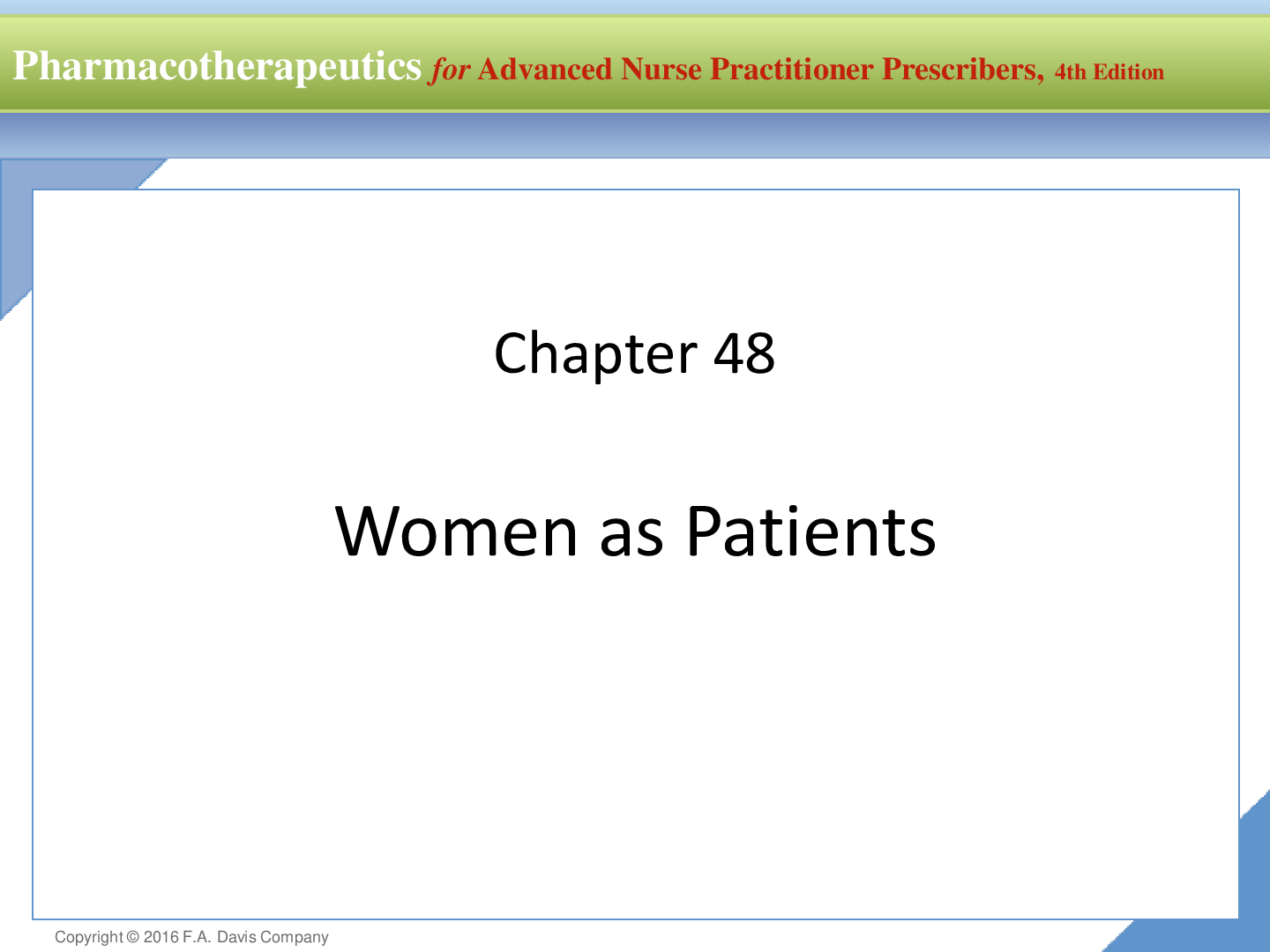
NR 566 / NR566 Advanced Pharmacology Care of the Family Weeks 7 & 8 Complete Notes Chapters 48, 49, 50, 51 | Highly Rated | Latest 2020 / 2021 | Chamberlain College
Contains NR 566 / NR566 Advanced Pharmacology Care of the Family Weeks 7 & 8 Complete Notes Chapters 48, 49, 50, 51 | Highly Rated | Latest 2020 / 2021 | Chamberlain College
By nurse_steph , Uploaded: Dec 27, 2020
$11.5
*NURSING> Class Notes > NR 667_SAMPLE_Capstone_Portfolio_Parts_12 CAPSTONE PORTFOLIO PART 1 (All)
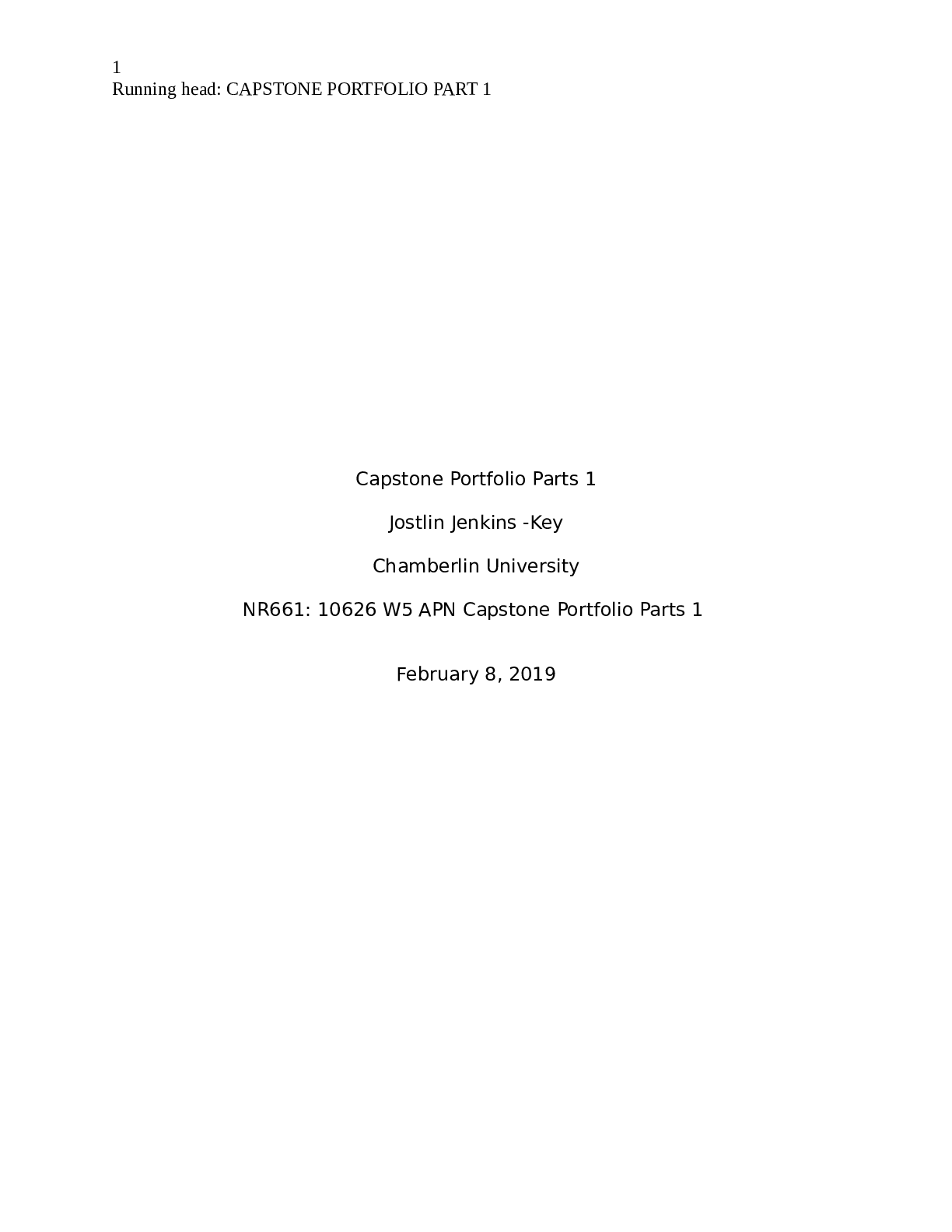
NR 667_SAMPLE_Capstone_Portfolio_Parts_12 CAPSTONE PORTFOLIO PART 1
2 CAPSTONE PORTFOLIO PART 1 First Last’sResume1of 2 JostlinJenkins-Key, BSN, FNPs 5606 Owens Dr. Apt 106 | Pleasanton, Ca 94588 [email protected] | 404-955-9634 CAREER SUMMARY Registered Nur...
By Johnpaul kibet , Uploaded: Oct 10, 2023
$11
Document information
Connected school, study & course
About the document
Uploaded On
Apr 04, 2021
Number of pages
9
Written in
Additional information
This document has been written for:
Uploaded
Apr 04, 2021
Downloads
0
Views
242






